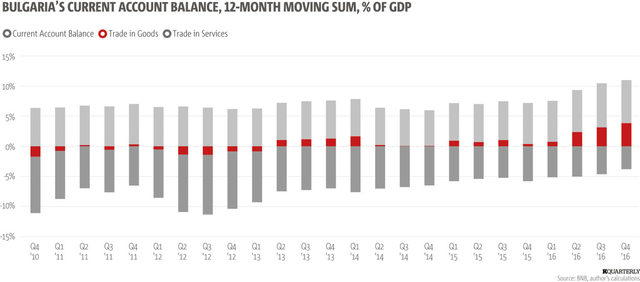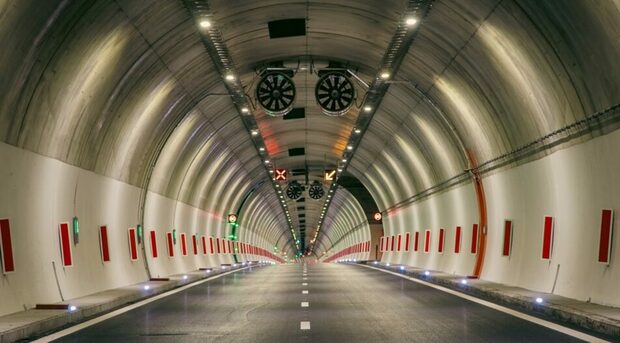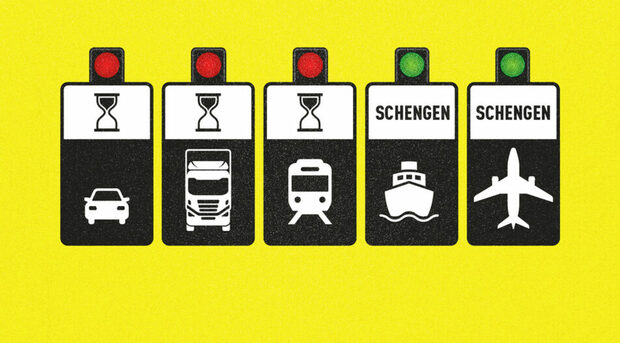Bulgaria's Current Account Balance (CAB) posted a 20-year record in the last quarter of 2016, reaching a surplus close to 4% of GDP. The current account balance shows whether a country is a net borrower from the rest of the world or a net lender. Bulgaria has traditionally run a negative CAB, which reached a record level in 2007, when the deficit exceeded 25% of GDP. Several experts and international institutions at that time were quick to point out that the huge deficit demonstrated a serious vulnerability of the economy and would be the main cause of a hard landing during the economic crisis of 2009.
The deficit has not only shrunk rapidly since then - the CAB has been in surplus since 2013. Although the surplus was close to zero for the better part of 2014, it stabilized in 2015 and rallied in 2016.
The main driver behind this has been the increase of the positive balance in trade in services as a ratio to GDP in Q4 2016. This balance exceeds 7% of GDP for a second quarter in a row, while its average value for the past three years is around 6.3%, and was mainly mainly due to the increased contribution of the tourism sector based on the growing inflow of foreign tourists. One of the reasons for this, prosaic as it may be, is the recent launch of Ryanair flights to and from Sofia. The transport sector and other services have also contributed to the positive balance of services.

At the same time, the negative contribution of net trade in goods to the CAB has been shrinking ever since 2013. It dropped to as low as 3.8% of GDP in Q4 2016, which is the second lowest value in the period 2011-2016, a period with an average deficit of around 7%. This was the result of a modest contraction in the imports of goods and a parallel increase in exports, which suggests an improvement in the competitiveness of Bulgarian goods.
The current account surplus suggests that Bulgarian goods and services are becoming more attractive to the rest of the world, which can be the result of several factors, including improved quality, lower prices, better access (in the case of more frequent flights to the country). A CAB surplus means that the central bank is increasing its foreign currency reserves, especially important in a currency board regime, as they provide a stable coverage of domestic currency. In the coming months the CAB can be expected to remain positive, although we could see a step back from the record high levels given an expected, but moderate, cool down of the European economy.
Kaloyan Staykov is an economist at Institute for Market Economics
Bulgaria's Current Account Balance (CAB) posted a 20-year record in the last quarter of 2016, reaching a surplus close to 4% of GDP. The current account balance shows whether a country is a net borrower from the rest of the world or a net lender. Bulgaria has traditionally run a negative CAB, which reached a record level in 2007, when the deficit exceeded 25% of GDP. Several experts and international institutions at that time were quick to point out that the huge deficit demonstrated a serious vulnerability of the economy and would be the main cause of a hard landing during the economic crisis of 2009.
The deficit has not only shrunk rapidly since then - the CAB has been in surplus since 2013. Although the surplus was close to zero for the better part of 2014, it stabilized in 2015 and rallied in 2016.












